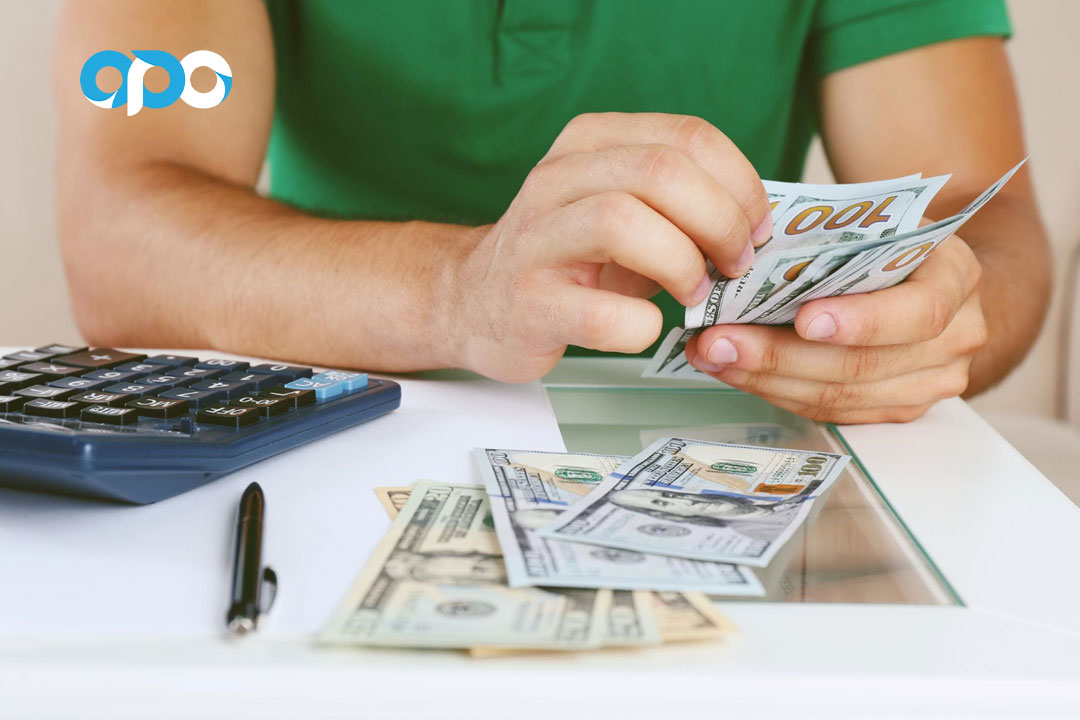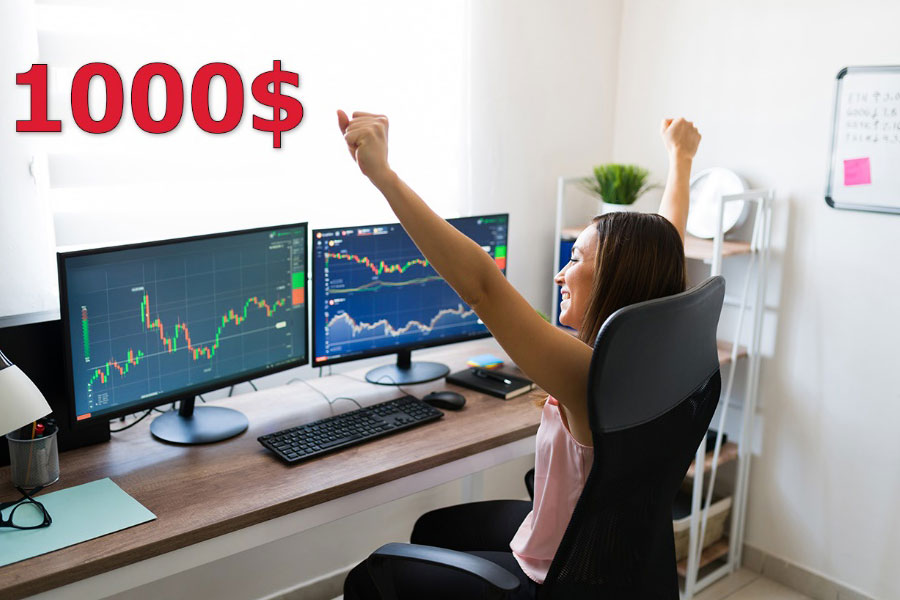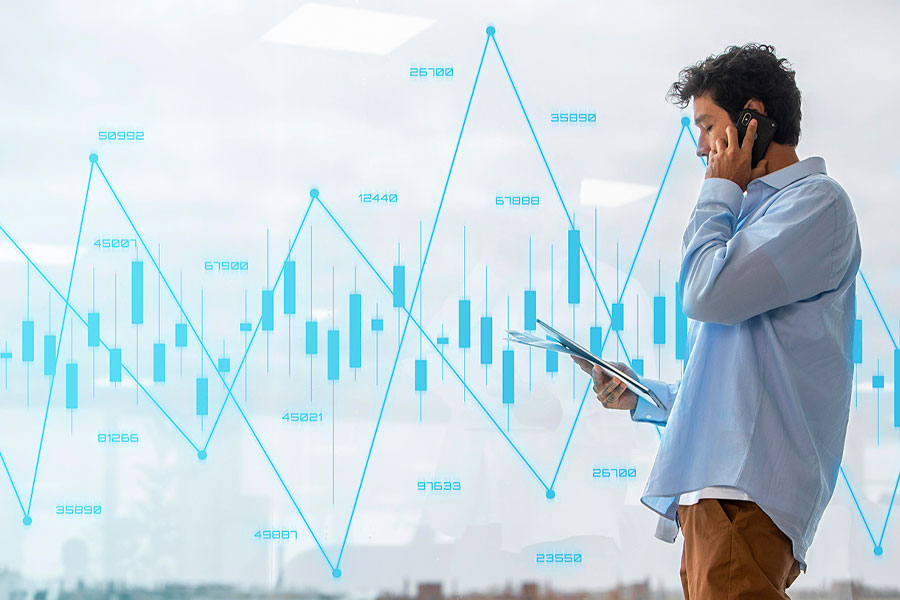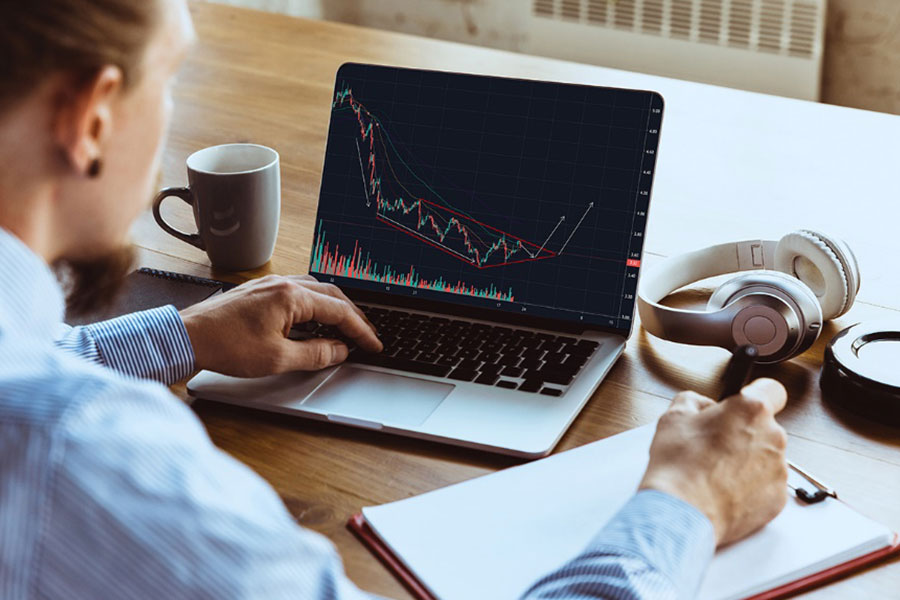Forex trading, or foreign exchange trading, involves buying and selling currencies to profit from fluctuations in their exchange rates. It is the largest and most liquid financial market globally, with a daily trading volume exceeding $6 trillion. If you’re wondering how to trade with 1000 dollars, this guide will walk you through the necessary steps, from choosing what to trade to managing your risk and selecting the right broker. Whether you’re a beginner or have some experience, these insights will help you maximize your $1000 investment in forex trading.

Understanding Forex Terminology
Before diving into forex trading with $1000, it’s crucial to understand some basic terminology:

- Pip: The smallest price movement in the forex market, typically 0.0001 for most currency pairs.
- Lot: A standardized quantity of currency. Forex trading includes micro (1,000 units), mini (10,000 units), and standard lots (100,000 units).
- Leverage: Allows traders to control larger positions with a smaller amount of capital. For instance, with 1:50 leverage, you can control $50,000 with a $1,000 investment.
- Spread: The difference between the bid (buy) and ask (sell) price of a currency pair. Tight spreads reduce trading costs, crucial when trading with a limited budget.
What to Trade?
When trading forex with $1000, focus on currency pairs that offer high liquidity and lower spreads. These pairs are often referred to as the “majors” and include:
- EUR/USD (Euro/US Dollar): Known for its high liquidity and narrow spreads, making it ideal for beginners.
- GBP/USD (British Pound/US Dollar): Offers significant volatility and potential for profits.
- USD/JPY (US Dollar/Japanese Yen): Provides high liquidity and tight spreads.
- AUD/USD (Australian Dollar/US Dollar): Popular due to Australia’s stable economy and ties to commodity prices.
- USD/CHF (US Dollar/Swiss Franc): Considered a safe-haven pair during economic uncertainty.
- USD/CAD (US Dollar/Canadian Dollar): Influenced by oil prices, offering unique trading opportunities.
When to Trade?

Forex trading operates 24 hours a day, five days a week, across four major sessions: Sydney, Tokyo, London, and New York. To make the most of your $1000, trade during periods of high market activity:
- London Session (8 AM to 4 PM GMT): The busiest session with high volatility and liquidity.
- New York Session (1 PM to 10 PM GMT): The second most active session, overlapping with the London session for several hours.
- Overlap Between London and New York Sessions (1 PM to 4 PM GMT): This period offers the highest trading volume and volatility, ideal for maximizing opportunities.
- Tokyo Session (12 AM to 9 AM GMT): While less volatile, it can still present opportunities, particularly for JPY pairs.
- Sydney Session (10 PM to 7 AM GMT): The least volatile session, often used for transitions between the New York and Tokyo sessions.
Read more: How Much do You Need to Start Trading Forex?
Choosing the Right Broker
Selecting a reputable broker is vital for trading forex with $1000. Here are key factors to consider:
- Regulation: Ensure the broker is regulated by reputable authorities like the FCA, ASIC, or CySEC.
- Account Types: Look for brokers offering micro or cent accounts, allowing for smaller trade sizes.
- Leverage: Choose brokers with reasonable leverage options (e.g., 1:30 or 1:50) to manage risk effectively.
- Spreads and Commissions: Opt for brokers with tight spreads and low commissions to minimize costs.
- Trading Platform: Ensure the broker provides a reliable and user-friendly platform like MetaTrader 4 (MT4) or MetaTrader 5 (MT5).
- Customer Support: Good customer support is essential, especially for new traders.
- Educational Resources: Some brokers offer educational resources, which can be invaluable for learning and improving your skills.
Recommended Brokers
· Oppofinance: Offers a user-friendly platform with competitive spreads, extensive educational materials, and robust customer support, making it a strong choice for beginners and experienced traders alike.
· IC Markets: Known for low spreads and high leverage options.
· OANDA: Offers competitive spreads and extensive educational resources.
· Forex.com: Reputable with various account types and advanced trading tools.
· XM: Ideal for small accounts with low minimum deposits.
· Pepperstone: Provides fast execution speeds and supports both MT4 and MT5.
Setting Up Your Trading Account
- Open a Demo Account: Practice trading on a demo account to understand the platform and test strategies without financial risk.
- Fund Your Account: Open a real account and fund it with your $1000. Opt for a micro or cent account to trade smaller lots.
- Choose Your Trading Platform: Install the trading platform provided by your broker, such as MT4 or MT5.
- Set Up Risk Management Tools: Utilize stop-loss and take-profit orders to manage risk effectively.
- Explore Broker Features: Familiarize yourself with the broker’s additional features like economic calendars and technical analysis tools.
- Set Realistic Goals: Define clear, achievable goals to stay focused and motivated.
Developing a Trading Strategy
Creating a robust trading strategy is crucial for success. Here are the steps:
- Market Analysis: Use technical analysis (charts, indicators) and fundamental analysis (economic news) to identify trading opportunities.
- Entry and Exit Points: Define clear entry and exit points using technical indicators like moving averages, RSI, and MACD.
- Risk Management: Limit risk to 1-2% of your capital per trade. Set stop-loss orders to protect your account.
- Trading Plan: Develop a detailed trading plan outlining your goals, risk tolerance, and strategies.
- Backtesting: Test your strategy on historical data to evaluate its effectiveness.
- Keep a Trading Journal: Document all trades, including the rationale and outcomes, to identify patterns and improve your strategy.
- Stay Adaptable: Be willing to adjust your strategy based on changing market conditions.
Advanced Trading Strategies
To maximize your $1000 investment, consider implementing advanced trading strategies:
- Scalping: This involves making numerous small trades to capture minor price movements. Scalping requires a lot of time and attention but can be profitable with the right approach.
- Swing Trading: This strategy focuses on capturing short- to medium-term price movements. Swing traders typically hold positions for several days to weeks.
- Position Trading: This long-term strategy involves holding trades for weeks to months, capitalizing on major trends. Position trading requires patience and a thorough understanding of fundamental analysis.
- Algorithmic Trading: Using automated trading systems to execute trades based on predefined criteria can remove emotions from trading and ensure consistent application of strategies.
Read more: Forex Trading Strategies for Small Accounts
Emotional and Psychological Aspects of Trading

Successful trading is not just about having the right strategy; it’s also about managing your emotions and psychological state. Here are some tips:
- Develop a Trading Routine: Establishing a consistent trading routine can help you stay disciplined and focused.
- Avoid Overtrading: Stick to your trading plan and avoid the temptation to make impulsive trades based on emotions.
- Accept Losses: Understand that losses are a part of trading. Learn from them and move on rather than dwelling on them.
- Stay Confident: Confidence in your strategy is crucial, but avoid overconfidence, which can lead to taking unnecessary risks.
Importance of Technical and Fundamental Analysis
Combining technical and fundamental analysis can provide a well-rounded approach to forex trading.
- Technical Analysis: This involves analyzing charts and using indicators to predict future price movements. Key tools include moving averages, Relative Strength Index (RSI), and Bollinger Bands.
- Fundamental Analysis: This focuses on economic indicators, such as interest rates, employment data, and geopolitical events, to determine the intrinsic value of a currency.
Case Studies and Examples
Providing real-world examples can help illustrate the concepts and strategies discussed. Here are a few hypothetical case studies:
Case Study 1: Scalping with $1000
- Objective: Make small profits from quick trades.
- Strategy: Use a 5-minute chart and indicators like Moving Average Convergence Divergence (MACD) to identify entry points.
- Outcome: Over a month, the trader makes 200 trades with an average profit of 2 pips per trade, resulting in a net profit of $400.
Case Study 2: Swing Trading with $1000
- Objective: Capture short- to medium-term price movements.
- Strategy: Use a daily chart and look for patterns like head and shoulders or double tops/bottoms.
- Outcome: The trader makes 10 trades in a month, with an average profit of 50 pips per trade, resulting in a net profit of $500.
Case Study 3: Position Trading with $1000
- Objective: Capitalize on long-term trends.
- Strategy: Use a weekly chart and fundamental analysis to identify major trends.
- Outcome: The trader makes 2 trades in a month, with an average profit of 200 pips per trade, resulting in a net profit of $400.
Read more:
How Much Can You Make with $1000 in Forex?
The potential earnings from trading forex with $1000 depend on your strategy, risk management, market conditions, and leverage. Here are realistic expectations:
- Low Risk (1% per trade): Aim for a monthly return of 2-5%, or $20-$50.
- Moderate Risk (2-3% per trade): Target a monthly return of 5-10%, or $50-$100.
- High Risk (4-5% per trade): Potentially achieve monthly returns of 10-20%, or $100-$200.
Forex trading is not a quick path to wealth. Consistency, discipline, and risk management are key to long-term success.
Read more: Consistent Profits in Forex
Practical Tips for Trading Forex with $1000
1. Start Small
Initiate your forex trading journey with small trade sizes to mitigate risk and build experience.
2. Keep Learning
Continuously enhance your knowledge about forex trading through books, online courses, and various educational resources.
3. Stay Informed
Stay updated on global economic news and events that could influence currency movements.
4. Maintain Discipline
Adhere strictly to your trading plan and avoid making impulsive decisions driven by emotions.
5. Use Leverage Wisely
Employ leverage cautiously, ensuring you fully comprehend its potential effects and risks.
6. Diversify Your Trades
Reduce risk by diversifying your trades across different currency pairs.
7. Set Realistic Goals
Strive for steady and consistent growth rather than aiming for unrealistic large profits.
8. Monitor Your Trades
Regularly review and analyze your trades to identify your strengths and areas that need improvement.
9. Stay Patient
Understand that successful trading demands patience and persistence.
10. Seek Mentorship
Find a mentor or join a trading community to gain insights from more experienced traders.
Conclusion
Trading forex with $1000 requires careful planning, disciplined execution, and continuous learning. By selecting the right currency pairs, trading during the most active sessions, choosing a reputable broker, and developing a solid trading strategy, you can maximize your chances of success. Manage your risk effectively, stay informed, and maintain a long-term perspective. With dedication and persistence, you can grow your $1000 investment and become a successful forex trader.
How do I choose the right forex trading strategy for my $1000 account?
Choosing the right forex trading strategy involves understanding your trading style, risk tolerance, and time commitment. Test different strategies on a demo account to find what works best before committing real money.
Can I make a living trading forex with $1000?
While it’s possible to grow a $1000 account over time, making a living solely from such a small initial capital is challenging. Focus on learning, risk management, and gradually increasing your capital.
What are the common mistakes to avoid when trading forex with $1000?
Avoid over-leveraging, not using stop-loss orders, trading without a plan, letting emotions drive decisions, and failing to educate yourself about the market.
How important is it to have a trading journal?
A trading journal is crucial for tracking performance, identifying strengths and weaknesses, and learning from past trades. It helps improve your strategy over time.
How can I manage my emotions while trading forex?
Managing emotions is crucial for successful trading. Develop a trading plan, stick to it, and avoid making impulsive decisions based on short-term market fluctuations. Techniques like mindfulness and meditation can also help maintain emotional balance.
What are the best resources for learning forex trading?
There are numerous resources available for learning forex trading, including online courses, books, webinars, and forums. Some recommended books are “Currency Trading for Dummies” by Brian Dolan and “A Beginner’s Guide to Forex Trading” by Matthew Driver. Websites like BabyPips.com offer comprehensive tutorials and forums for traders of all levels.
Can automated trading systems help me trade forex with $1000?
Automated trading systems, or forex robots, can help execute trades based on predefined criteria. They can be useful for removing emotions from trading and ensuring consistent strategy implementation. However, it’s essential to thoroughly test and understand any automated system before using it with real money.
How do geopolitical events affect forex trading?
Geopolitical events, such as elections, conflicts, and trade agreements, can significantly impact currency prices. Staying informed about global news and understanding its potential effects on the forex market can help you make more informed trading decisions.







